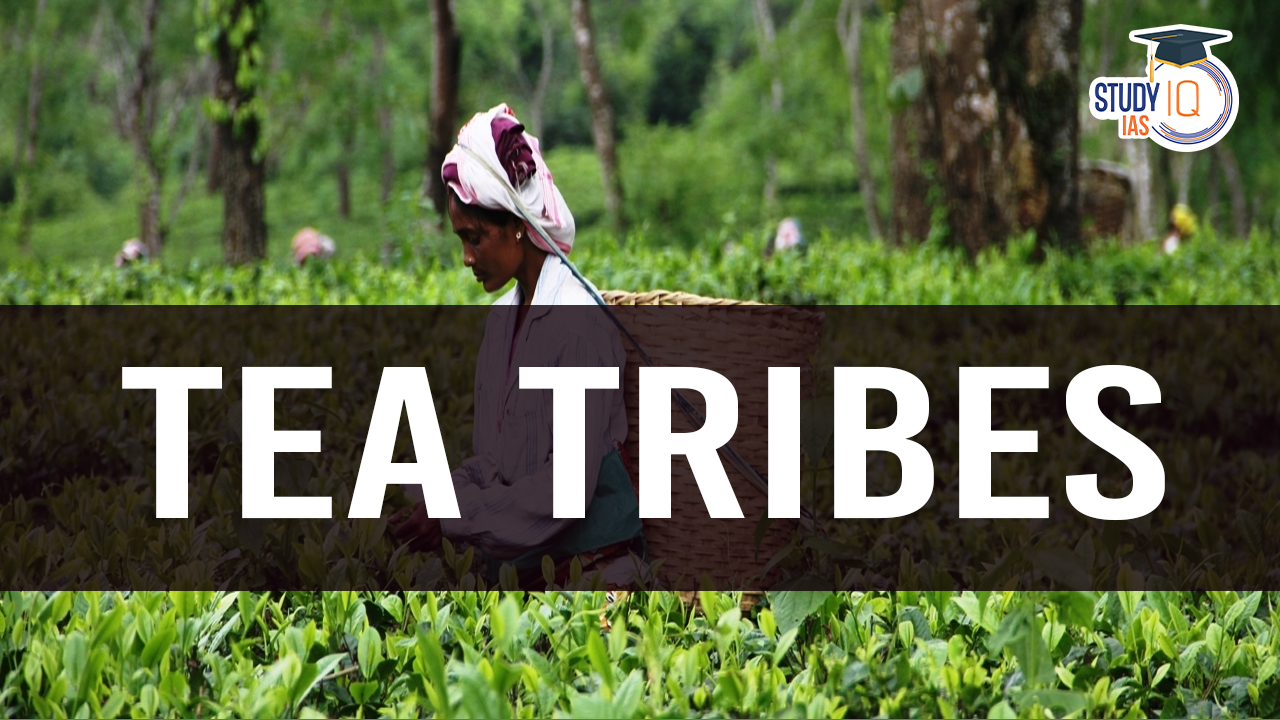Table of Contents
Context: The West Bengal government has allowed 30% of tea garden land to be used for purposes other than tea cultivation. Unions and opposition are criticizing the move, stating that it threatens indigenous groups/ Tea Tribes.
About Tea Tribes
- Tea Tribes are indigenous and migrant communities mainly working in tea plantations, particularly in Assam and West Bengal.
- Many tea tribes are descendants of Adivasis brought from Jharkhand, Chhattisgarh, Odisha and Andhra Pradesh by the British during the 19th century to work in tea plantations.
- They form a significant portion of the tea garden workforce.
- Despite their contribution to the tea industry, they face poverty, illiteracy, low wages and poor living conditions.
- Major Tea Tribe Communities: Munda, Oraon, Santhal, Kora, Gond, Kharia, Lohar, Bhumij.
About Tea
- Tea is one of the oldest and most widely consumed beverages in the world.
- It is made from the leaves of the Camellia sinensis plant.
- Tea plantations use shade trees to protect plants from excessive sunlight.
Climatic Conditions Required
- Temperature: 20°C to 30°C (Ideal for growth).
- Rainfall: 150-300 cm annually (well-distributed).
- Altitude: Grows well in hilly regions (600-2000 m above sea level).
- Tea plants are sensitive to frost.
Soil Requirements
- Well-drained loamy soil with good aeration.
- Rich in organic matter and iron content.
Tea Production
- Top Producing Countries: (1) China (2) India (3) Kenya (4) Sri Lanka
- Top Tea Producing States: (1) Assam (2) West Bengal (3) Tamil Nadu (4) Kerala (5)Karnataka.
- Other Tea-producing states: Tripura, Arunachal Pradesh, Himachal Pradesh, Meghalaya, Mizoram, Sikkim, Manipur and Nagaland.
| UPSC PYQ |
Q. Consider the following States: (2022)
How many of the above are generally known as tea-producing States? (a) Only one State (b) Only two States (c) Only three States (d) All four States Answer: D |


 Vizhinjam International Seaport Project,...
Vizhinjam International Seaport Project,...
 Tsunami Zones of India, Causes and Subdu...
Tsunami Zones of India, Causes and Subdu...
 Places in News for UPSC 2025 for Prelims...
Places in News for UPSC 2025 for Prelims...





















